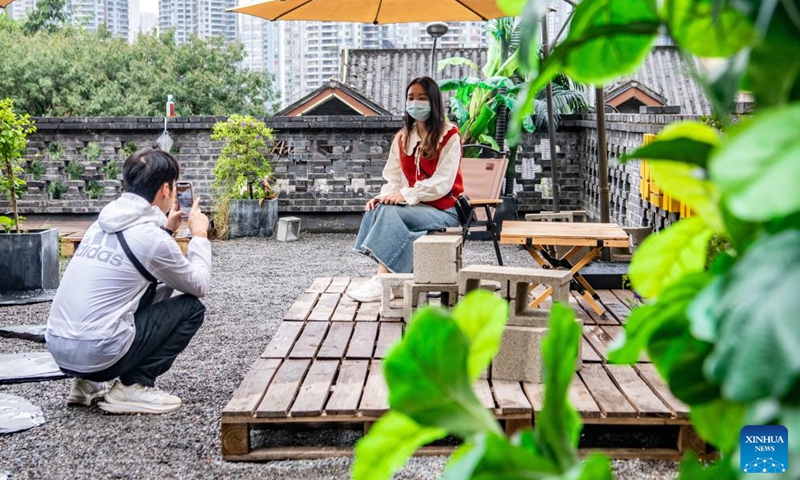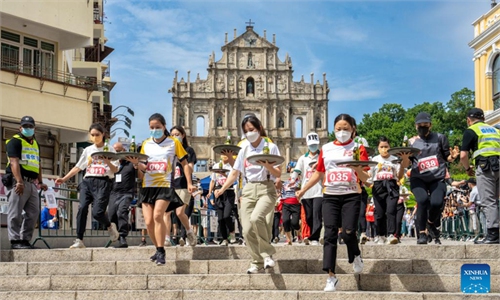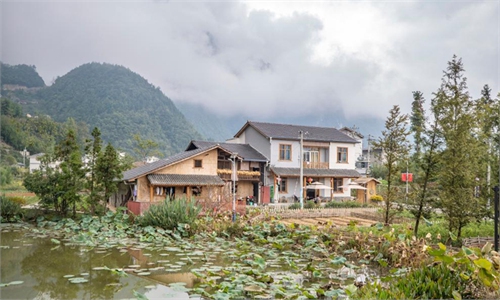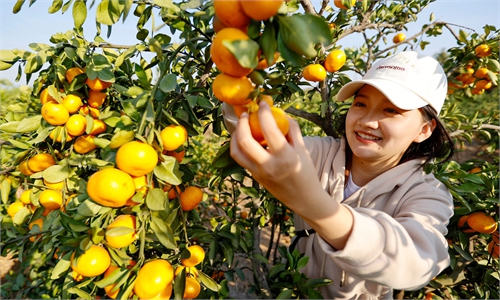Chinese tourism ministry optimizes COVID prevention guidelines, set to boost travel and culture sector

A tourist poses for a photo in a commercial complex reconstructed from an old building in Yuzhong District, southwest China's Chongqing, Oct. 6, 2022.Photo:Xinhua
China on Friday further optimized epidemic prevention and control measures in the tourism and culture sector, which are in line with the country's newly released targeted and science-based COVID-19 measures set to effectively coordinate epidemic control with economic and social development.
Analysts said that the latest adjustments are apparent moves to relax the previously strict requirements on the tourism and culture sector, which is a positive sign of further recovery.
The Ministry of Culture and Tourism on Friday released five guidelines on revised epidemic prevention and control work, covering travel agencies, internet service businesses, entertainment venues, venues of live shows and theaters. Another optimized epidemic response guideline on libraries and cultural centers was also released.
The guidelines are aimed at protecting people's lives and health, while minimizing the impact of the epidemic on the development of tourism. The measures limiting numbers of people in scenic spots and cultural and entertainment venues that were in place in the May version were removed from the latest version.
In the latest version of the guidelines, venues are required to clean and disinfect frequently touched public facilities and equipment, such as elevators, corridors, doorknobs, escalator handrails, front desks, seats and toilets at least twice a day.
Group travel to high-risk areas is banned. If a region is classified as a high-risk zone, tour groups that have not departed must immediately cancel or change their itineraries, read the guidelines.
Such adjustments are detailed measures that are in line with the 20 targeted and science-based epidemic prevention measures released by the central government recently, Jiang Yiyi, deputy head of the School of Leisure Sports and Tourism under the Beijing Sport University, told the Global Times on Friday.
"The optimized measures are a further easing of epidemic prevention and controls in the tourism sector, especially in cross-province tourism, group tourism and management of scenic spots," said Jiang.
A total of 20 prevention and control measures to further optimize the COVID-19 response were released on November 11, read a circular by the government. It also stressed the necessity of maintaining a firm strategic resolve, and carrying out COVID-19 control work in a science-based and targeted manner.
After the circular, a series of policies was released, including on Tuesday, when the Ministry of Culture and Tourism announced that tourists could travel to other provinces on public transportation with a negative nucleic acid test result done within 48 hours.
And a guideline on revised epidemic prevention and control measures was released on Thursday by the ministry.
The search volume of inter-provincial travel products on online travel platform Trip reached its highest since the National Day holiday in early October, and the search volume for self-travel products increased by more than two times from Monday, according to statistics sent to the Global Times from Trip.
Jiang noted that the recent adjustments will meet people's demand for travel and entertainment on the premise of maintaining their safety through targeted normal prevention and control.
"Because many regions in the country are still suffering from repeated epidemic outbreaks, it cannot say that tourism will rebound completely following the measures. But we still have confidence in the growth of tourism, as the adjustments are positive signals," said Jiang.
Travel orders already surged after the government's 20 prevention and control measures were announced. Statistics showed that since November, the popularity of skiing-related visits on Trip has increased by 84 percent month-on-month.
In the past week, bookings for ski resort tickets for the 2022-2023 snow season increased by 403 percent from the week that ended November 11, and bookings for hotels featuring snow and ice increased by 96 percent from last week.
"The dividends of the Beijing Winter Olympic Games in February are gradually being released, which has greatly boosted market supply and demand. Ice and snow travel may reach a new high this winter," said Jiang.
She also noted that China has about 200 million ice and snow tourists and a skiing population of 20 million.
According to forecasts from the National Tourism Data Center, China's ice and snow tourism market is expected to reach 400 million person-times in 2023.



